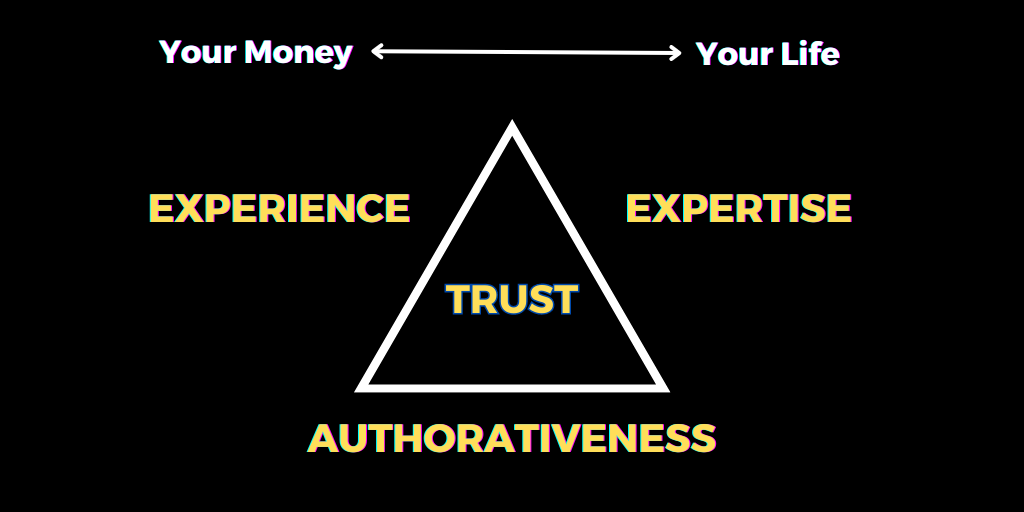Think of your website as your law firm’s reception area. When clients walk into your physical office, you’d never leave outdated brochures on the coffee table, broken chairs in the waiting room, or a receptionist who doesn’t know your phone number. Yet many law firms unknowingly maintain websites with the digital equivalent of these trust-killing problems.
The difference? Online visitors won’t politely overlook these issues—they’ll simply click back to Google and choose a competitor who appears more professional and reliable.
This post identifies the most common law firm website SEO mistakes that hurt both search rankings and client conversion, plus the specific fixes you can implement this week to start rebuilding trust with both Google and potential clients.
This series is based on a long-form post entitled: “How Google Really Evaluates Law Firm Websites in 2025 (and 4 Changes You Must Make)”. You can check it out via this link.
The Urgent Fixes That Can't Wait
Audit and Update Your Legal Content
Outdated legal information isn’t just an SEO problem—it’s a credibility crisis waiting to happen. When your estate planning page still references tax exemptions from 2019, or your bankruptcy content doesn’t reflect recent legislative changes, you’re signaling to both algorithms and clients that your practice isn’t current.
Outdated pages are like expired licenses—they break trust immediately.
Sirus Digital Tweet
Why this matters now:
- Google’s algorithms actively penalize outdated YMYL content
- AI tools like ChatGPT won’t reference information they flag as potentially inaccurate
- Clients often research extensively before calling, and outdated content raises red flags
Your action plan:
- This week: Review your top 5 practice area pages for outdated laws, regulations, or procedures
- This month: Create a content review calendar to update key pages annually
- Right now: Remove any blog posts older than 3 years unless they contain evergreen, still-accurate information
💡 Start here: Check your estate planning or bankruptcy pages for references to tax limits, exemption amounts, or filing procedures that may have changed since 2022.
Fix Broken Elements That Destroy Trust
Nothing undermines professional credibility faster than a contact form that doesn’t work or a “404 error” when someone clicks on your attorney bio. These technical problems are among the most damaging law firm website SEO mistakes because they affect both user experience and search engine evaluation.

Critical elements to test immediately:
- Contact forms on desktop and mobile devices
- Phone numbers (do they connect to your actual office?)
- Email addresses (do they reach the right person?)
- All navigation links, especially to attorney bios and service pages
- SSL certificates (does your URL show “https” with a lock icon?)
The trust connection: When someone is ready to discuss a sensitive legal matter, a broken contact form feels like a locked office door. They’ll interpret technical problems as signs of an unreliable practice.
If your forms don’t work, neither does your pipeline.
CRO/UX axiom Tweet
💡 Quick test: Use your smartphone to navigate your website as if you were a potential client. Try to contact your office using every method listed on your site.
Optimize for Mobile and Speed
Your potential clients increasingly search for legal help from their phones—often during stressful moments when they need answers quickly. A slow-loading or poorly formatted mobile site sends the message that you don’t understand modern client needs.
The impact on trust and rankings:
- Sites loading slower than 3 seconds lose 32% of mobile visitors
- Google’s Core Web Vitals make page speed a direct ranking factor
- Poor mobile experience suggests your practice isn’t current with client expectations
Immediate improvements:
- Test your site speed: Use Google PageSpeed Insights to check your homepage and key service pages
- Review mobile layout: Ensure text is readable without zooming and buttons are easily clickable
- Optimize images: Large, uncompressed photos are the most common speed killers
Suggested External Links:
💡 Target goal: Aim for load times under 2.5 seconds on mobile devices. This puts you ahead of 60% of law firm websites.
Restructure Key Pages for Better Conversions
Many law firm websites are organized like legal briefs—logically structured but not optimized for how stressed, hurried people actually read online. Your page structure should guide visitors toward taking action, not just consuming information.
Essential page elements that build trust:
On your homepage:
- Attorney photos and credentials visible without scrolling
- Clear description of who you help and how
- Prominent phone number and contact options
- Client testimonial or case result in the top section

On practice area pages:
- H1 heading that includes relevant keywords (e.g., “Estate Planning Attorney in [City]”)
- Attorney bio section showing who handles these cases
- At least one client testimonial specific to that practice area
- Clear call-to-action (“Schedule Your Consultation”)
The psychology: People hiring attorneys want to see competence and feel connection. Your page structure should demonstrate both within the first few seconds of arrival.
💡 Quick win: Add a brief attorney bio and photo to each practice area page. This simple change can increase consultation requests by 15-25%.
For more specifics on how to improve your Attorney Bios, check out this post (How We Fixed An Attorney Bio Page By Adding One Line Of Human StoryTelling).
The Credibility Killers to Eliminate
Generic Template Content
If your website uses placeholder content like “We are committed to providing excellent legal services,” you’re missing opportunities to demonstrate real expertise. This generic language is easily spotted by both visitors and search engines.
Replace with specifics:
- Instead of: “We handle complex legal matters”
- Use: “We’ve guided over 200 families through contested probate proceedings”
Missing or Vague Contact Information
Potential clients need to know exactly how to reach you and what to expect when they do. Vague contact information creates uncertainty at the moment when people are most ready to act.
A confused visitor doesn’t become a client.
Donald Miller, Storybrand Tweet
Trust-building contact elements:
- Specific office address with embedded map
- Direct phone number (not just a contact form)
- Clear business hours
- Response time expectations for emails and calls
Beyond the Quick Fixes
Remember, these technical and structural improvements are just the foundation. The attorneys who see the biggest improvements in both search rankings and client conversion are those who combine these fixes with authentic expertise and genuine client focus.
Your website should feel like a natural extension of your practice—professional, current, and designed around the real needs of people facing legal challenges.
Start With What Matters Most
You don’t need to fix everything at once. Focus on the changes that will have the biggest impact on both trust and search performance:
Every broken link is a broken promise to your visitor
Web credibility expert Tweet
- This week: Test and fix any broken contact methods
- This month: Update your most important practice area content
- Ongoing: Monitor site speed and mobile performance monthly

These aren’t glamorous changes, but they’re the foundation that everything else builds on. Get these right, and both Google and your potential clients will start seeing your practice as more trustworthy and professional.
Ready for the Next Level?
Once you’ve addressed these fundamental website issues, the question becomes: how do you maintain high-quality, trust-building content without it consuming all your time?
➡️ Next up: Post 4: Smarter Law Firm Marketing: Tools That Build Trust and Free Your Time
We’ll cover sustainable systems for keeping your website current, building ongoing authority, and managing your digital presence efficiently—so you can focus on practicing law while still growing your firm’s online visibility.
Need help diagnosing and fixing these issues?
At Sirus Digital, we specialize in helping law firms identify and resolve the website problems that hurt both search rankings and client conversion.
Contact us for a complimentary website assessment that identifies your highest-priority improvements and provides a clear action plan for implementation.
If you’re looking for a website refresh, be sure to ask about our program that offers a new, updated site for a fixed monthly fee. It even provides a revamp to keep your site clean, current, and responsive under certain situations. Ask about it today!
This is the third of a four-part series from Sirus Digital designed to help legacy-minded law firms build a trusted online presence by aligning with Google’s EEAT (Experience, Expertise, Authoritativeness, and Trustworthiness) and YMYL (Your Money, Your Life) standards.
- The Digital Credibility Framework Every Law Firm Must Understand in 2025
Understand the fundamentals of EEAT and YMYL and why they matter more than ever for legal professionals. - Credibility Is the New Currency: Building a Legal Website That Converts and Ranks
Explore the website signals that influence both search engines and prospective clients—and learn how to optimize them effectively. - What You Must Change on Your Website Right Now
A practical guide to the most common law firm website mistakes—and how to correct them fast. - Smarter Law Firm Marketing: Tools That Build Trust and Free Your Time
Discover tools and techniques that elevate your digital presence while giving you back time for client work.


